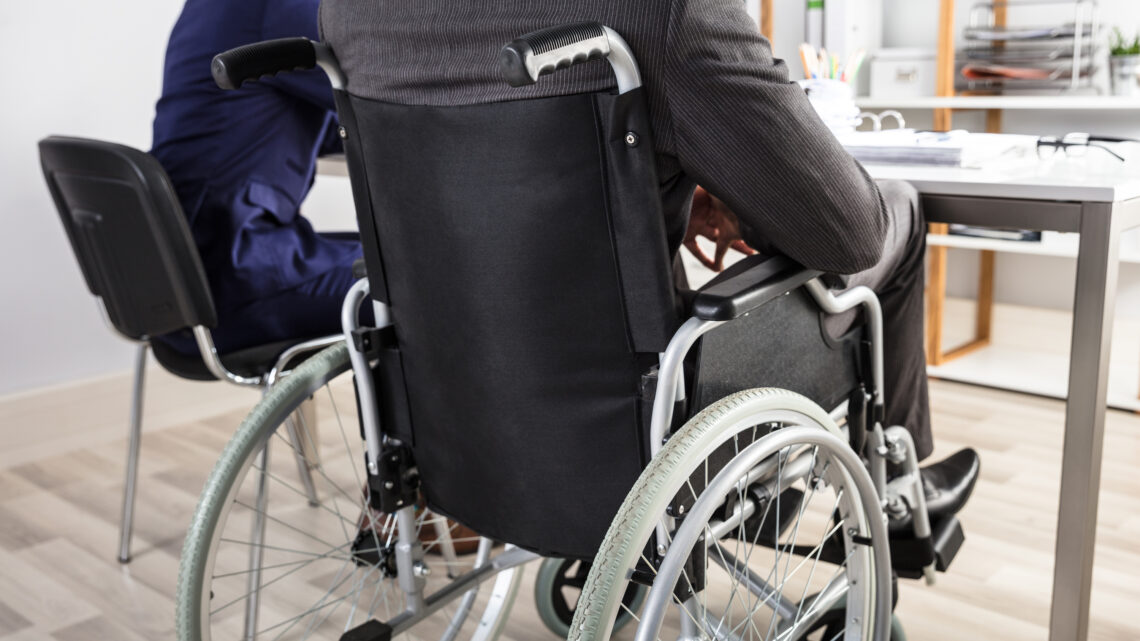
Unemployment Soars for New Yorkers With Disabilities as Challenges Outweigh New Opportunities
March 25, 2022The unemployment rate for working-age New Yorkers who identify as having a disability more than doubled during the COVID-19 pandemic, as the city has cut funding to many programs that help people succeed at work.
In 2021, nearly 17% of working-age people in New York City with a disability were unemployed, up from 7.4% in 2019, according to the most recent quarterly numbers from the U.S. Bureau of Labor Statistics.
Meanwhile, funding for programs that serve the nearly 1 million people in New York City who identify as having a disability has significantly decreased over the years, the Center for an Urban Future asserts in a new report crunching employment data, budget numbers and policy changes.
“New York City has an opportunity to be a funder of innovation in the field, but we’ve seen the city is disinvesting,” said Eli Dvorkin, the Center’s editorial and policy director, who headed the study on the workforce of disabled New Yorkers.
The annual allocation for the Mayor’s Office for People with Disabilities – which is in between commissioners after its longtime head Victor Calise stepped down earlier this month — is just $820,000 in the most recent budget, according to Dvorkin, who received the budget through a Freedom of Information Law request.
New York City spending per resident with a self-reported disability pales in comparison to other cities.
For example, the 2021-’22 budget for Los Angeles’s office for people with disabilities is $4,800,246, with just over $12 spent per each person with a disability, according to the report’s analysis.
New York City, which has twice the total population, will only spend 88 cents per person with a disability this fiscal year, the Center found.
The report also noted that the number of people actively interacting with MOPD who said they had a mental health disability rose from 11% in 2019 to 28% in 2022.
Mayor Eric Adams, who has spoken frequently about having a learning disability, earlier this month committed to a partnership between the Mayor’s Office for People with Disabilities and the Mayor’s Office of Workforce Development to connect more disabled New Yorkers to jobs.
The MOPD is still searching for a new commissioner, and is set to get a modest budget increase to $850,000 after this year, according to a spokesperson for the mayor.
“The administration is engaged in a wide-reaching, exhaustive search to find the best person to lead the Mayor’s Office for Disabilities, and will have more to announce soon,” the mayor’s office said in an unsigned email.
Funding Slashed
Many people living in New York City with a physical or intellectual challenge rely on nonprofit organizations for job training and placement, but funding for these programs has significantly declined, the Center for an Urban Future’s analysis shows.
Over the last two decades, city funding to contracts to provide services for New Yorkers with intellectual and developmental disabilities has gone from $46.8 million in 2001 to $21.4 million in the current fiscal year. Adjusted for inflation, that’s a decrease of 82%, the analysis found.
“A major expansion of employment for New Yorkers with disabilities is possible, and in some really small ways already happening — but we’ve never been a city at the forefront of hiring for people with disabilities,” Dvorkin told THE CITY.
The pandemic has created more remote-work opportunities, he noted, and technological advances have made it easier for hearing and visually impaired people to participate in the job market.
But there is still no cohesive strategy across city agencies and private organizations to improve job numbers for disabled New Yorkers, people who work in the field say.
“The reality is that there really isn’t any sense of urgency around this,” Susan Scheer, a longtime leader in the community who is now working as a disability-inclusion consultant, told THE CITY.
She argues for more funding from the city and more people with disabilities actually working in senior positions throughout city government.
“Having people with disabilities there, whether they’re doing disability work or not, makes them an internal resource who can provide guidance and set a supportive tone around disability access and inclusion.”
A Little Help
Nuris Mercedes, 22, is currently searching for a new job with help from counselors at the Institute for Career Development, a nonprofit that helps individuals with disabilities secure work.
She previously worked at a very busy McDonald’s restaurant in the Bronx but, as someone with an intellectual disability, she found the work to be too stressful, she said.
“Sometimes I just need someone to tell me, do this that way, to guide me,” she told THE CITY.
After a six-month internship program at a Brooklyn high school, she found she enjoyed file management and other administrative tasks. She’s hoping to work in a hospital, or as an administrative assistant — but it has been difficult to find the right fit, she said.
“I’m in a good work environment if I see that the person working with me is patient and has patience with me,” she said. “I can tell them that I need, in order for me to perform the job well, I will need extra assistance and someone to help me whenever I need help.”
Further Obstacles
Challenges for people with disabilities in the workforce include what’s known as the “benefits cliff,” which is the threshold at which someone loses access to Medicaid or Supplemental Security Income benefits once they earn above a certain amount, the report noted.
“For folks that want to try going back to work, but may be hesitant, usually they’ve had to fight really hard to get SSI or SSDI benefits,” Miranda Harms, senior employment advisor with RIT and a former member of the New York State Rehabilitation Council, said in the report.
“It’s a difficult process. So, when someone finally gets those benefits that they need, it’s scary down the road to think about trying work again,” she said.
The city’s transportation and other infrastructure can also make it hard to get around and get to a job, the report found.
Karen Bornath, the vice president of industry partnerships and initiatives for Hot Bread Kitchen, which trains people in the food industry, said transportation needs to “improve greatly.”
“Without that, I don’t know how anything can happen if you literally can’t get where you’re going,” she said in the report.
THE CITY reported last week that the Taxi and Limousine Commission just missed a decade-old deadline to make half of all yellow taxis wheelchair accessible. And barely a quarter of New York’s subway stations are compliant with the Americans with Disabilities Act.
There are also continued misconceptions about what disabled New Yorkers can do, which could be cleared up with more awareness, training, and incentives to hire people, services providers said.
“They don’t think that people with disabilities can be good employees because, again, they haven’t had the experience,” Nancy Miller, the CEO of VISIONS, a nonprofit that works with those with visual impairments, said in the report.
“They think it’s more of a barrier than it really is.”
This article was originally posted on Unemployment Soars for New Yorkers With Disabilities as Challenges Outweigh New Opportunities


